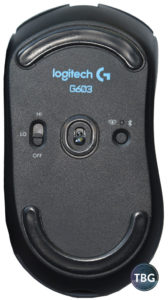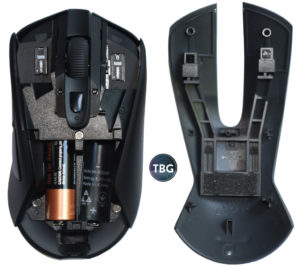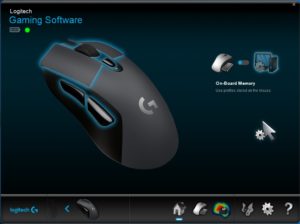Logitech G603 Lightspeed Wireless Gaming Mouse Review
Pros
Cons
Rating
Introduction
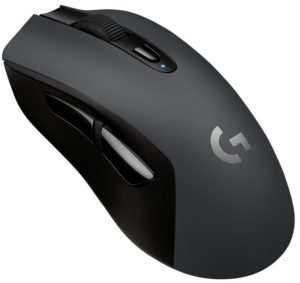 Here at TBG, we love testing new mice, and we’re always happy to see recent innovation in a market that was dormant for far too long. While we’ve tested plenty of cool mice over the past few years, some of our very favorite mice over the past few years have come from Logitech, including its G602 Wireless Gaming Mouse, the G502 Proteus Spectrum Wired Mouse, which won our big gaming peripherals shootout, and most recently its G403 Prodigy Wireless Gaming Mouse. We crowned that last mouse the best mouse we’d ever tested, and in fact it’s the mouse we’ve chosen to use ever since, despite other models passing through our hands. What’s particularly interesting about Logitech is that it appears to have moved far beyond its competitors in one important feature: wireless connectivity. While most of its competitors don’t even offer wireless gaming mice, Logitech has clearly embraced the technology, moving all of its high-end mice to wireless. The wired G502, released several years ago and currently the best-selling gaming mouse in the world, is now heavily discounted and likely will not be replaced. And as we found in our review of the G403 Prodigy upon its release in 2016, Logitech has clearly made great strides in making wireless mice just as responsive as wired mice, if not more so. There was just one challenge that remained in terms of making wired mice entirely obsolete: battery life.
Here at TBG, we love testing new mice, and we’re always happy to see recent innovation in a market that was dormant for far too long. While we’ve tested plenty of cool mice over the past few years, some of our very favorite mice over the past few years have come from Logitech, including its G602 Wireless Gaming Mouse, the G502 Proteus Spectrum Wired Mouse, which won our big gaming peripherals shootout, and most recently its G403 Prodigy Wireless Gaming Mouse. We crowned that last mouse the best mouse we’d ever tested, and in fact it’s the mouse we’ve chosen to use ever since, despite other models passing through our hands. What’s particularly interesting about Logitech is that it appears to have moved far beyond its competitors in one important feature: wireless connectivity. While most of its competitors don’t even offer wireless gaming mice, Logitech has clearly embraced the technology, moving all of its high-end mice to wireless. The wired G502, released several years ago and currently the best-selling gaming mouse in the world, is now heavily discounted and likely will not be replaced. And as we found in our review of the G403 Prodigy upon its release in 2016, Logitech has clearly made great strides in making wireless mice just as responsive as wired mice, if not more so. There was just one challenge that remained in terms of making wired mice entirely obsolete: battery life.
Well, for 2017, Logitech is addressing this last barrier to adoption in several innovative ways. First, Logitech has actually replaced the G403 after just one year with the new G703 Lightspeed, which is the same mouse, but with wireless charging added as an option. In other words, the user will never need to stop to charge its batteries. But this amazing system doesn’t come cheap; the total price of the G703 plus the as-yet-unreleased wireless charging mousepad will be $200. Luckily, Logitech’s engineers have another way of attacking the problem: making the mouse more efficient. In this review, we’ll be testing its latest entry in the efficiency wars: the new Logitech G603 Lightspeed Wireless Gaming Mouse. Coming in at a very reasonable $70, it’s based on the G403, which debuted at $100 last year, but has been redesigned internally for use with AA batteries just like the aging G602, while offering far better battery life than either model. Note that the G602 was once Logitech’s high-end wireless gaming option, but it’s currently selling for $35 and is our top pick for a mid-range office mouse. We expect it to be discontinued sooner rather than later, because it’s a steal at that price!
This is all to say that Logitech isn’t sitting still in the wireless mouse market, despite the lack of competition. In fact, it’s working hard to establish itself as the only manufacturer to consider for wireless mice, and it’s not afraid to put relatively-new models out to pasture to clear the decks for its very best offerings. So, if the G403 was our favorite high-end mouse ever, and the G602 was our favorite mid-priced wireless mouse, is the G603 really the best of both worlds, and thus the best mouse to ever slide across a mousemat? Read on to find out!
We’d like to extend a special thank you to Logitech for providing us with a review sample of the Logitech G603 Lightspeed Wireless Gaming Mouse.

Description and Features
Shown above on the right, the G603 is clearly derivative of the G403, shown on the left. The G603 offers the subtlest of aesthetic changes, including the switch to a slate-grey top for a little extra style and the removal of the G403’s RBG lighting. Yes, you read that right, the G603 has no RGB lighting, making it likely the only gaming mouse on the planet over $30 that has no lighting whatsoever. If that rubs you the wrong way, there’s little we can do to make things right. Might you take consolation in the fact that the RGB lighting on the G403 was clearly tacked on, and didn’t even work right until 8 months after release? Yeah, Logitech really doesn’t get RGB lighting, and the fact that it cut the battery life on the G403 down from 32 hours to 20 hours didn’t make things any better. We’re glad Logitech has moved on from trying to fight a battle it was bound to lose, and has instead focused on what it does best: making world-beating mice.
OK, let’s get into some of the features that the G603 actually does offer, shall we? Logitech is making a big deal of its new home-grown High Efficiency Rated Optical (HERO) sensor, claiming that it’s 10x more efficient than the excellent PixArt PMW3366 optical sensor in the G403, with no degradation in performance. It’s still capable of 12,000dpi, and presumably has the same stellar latency ratings, which we’ll be putting that to the test on the next page. The G603 loses the rechargeable lithium battery of the G403, and instead relies on two AA batteries, as in the G602. And just like that mouse, it can run on just one battery, which is a huge advantage for gamers, due to the weight of AA batteries. On our scale, the G403 weighs 105g (or 115g with its optional weight module), the G602 weighed a portly 154g with two AAs and 131g with one, and the new G603 weighs 135g with two AAs and 112g with one. In other words, it’s nearly as trim as the G403, and even with one AA, it blows away the G403 in terms of battery life.
Let’s discuss that issue in more detail, because it’s a really big deal, and it’s what makes the G603 so unique. The G603 has three modes: high-performance mode, low-performance mode, and Bluetooth mode. The latter two behave the same way, running a total of 1,400 hours on two AAs (or 700 hours on one), by virtue of a rather leisurely 8ms polling rate (125 reports per second). In high-performance mode, the G603 utilizes a 1ms polling rate (or 1000 reports per second), and can last 500 hours with two AAs, or 250 hours with one. Give that a moment to sink in. Even with a single AA battery, this mouse lasts 8x longer than the G403 even when that mouse had its RGB lights shut off. And it weighs just 7g more. And it costs $30 less. That’s some serious wow, folks!
While it doesn’t have nearly as many buttons as some of its stablemates, at least the G603 has the ones that really count: a DPI selector switch up top, a solid-feeling scroll wheel with a grippy rubber texture, and two big thumb buttons on the side. Whether you like the size of these depends on how much effort you want it to take to hit them. Yes, we did just lose multiple paragraphs of this review by accidentally hitting the “back” button, but that’s our fault, right? We still prefer this approach to the slimline buttons that most competitors are using, which take a lot more effort to hit while in-game. As you can see in our semi-exploded view to the left, the top two switches really are Omron models, which are the best in the business (apparently, Logitech hasn’t yet decided to reinvent the switch like it has the sensor). Take note that the buttons themselves are actually simply extensions of the shell, rather that separate hinged parts as on the G403. We’ll discuss the effect of this more on the next page, but in short, it does make them a bit less responsive.
Logitech’s excellent Logitech Gaming Software (LGS) of course plays a role in the whole G603 experience, but given the relatively few buttons and complete lack of lighting, it’s a lot less significant that it would be with other peripherals. It doesn’t even provide estimated battery life, which we really miss from the G403 and many of Logitech’s other peripherals, but we’d guess that there’s just a bit too much margin of error when you’re talking about the potential for 1400+ hours of battery life. Instead, the software simply displays which mode you’re in (the green emblem in the upper-left of this screenshot indicates low-power mode, or what Logitech calls “endurance”). When in performance mode, that emblem is blue.
Let’s move onto our subjective performance evaluation, and then finish up with our overall thoughts.
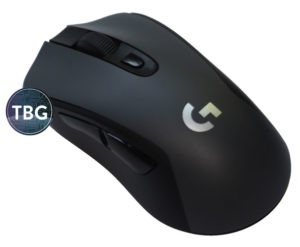
Performance
We should be upfront about the fact that we’re not going to put Logitech’s battery life claims to the test in this review. It just wouldn’t be feasible, because even in the worst case scenario (high-performance mode with one AA battery), Logitech claims the G603 will last 250 hours. Suffice it to say that we’ve found all of Logitech’s battery life claims to be accurate in the past, and we don’t suspect that the company is “faking it” this time around. We averaged around 25 hours on our G403 with a mix of uses before needing a charge. With the G603, we can roll all day in “lo” mode and get essentially infinite battery life, or switch into hi-power mode and still get a minimum of 10x that, if Logitech is to be believed. But how does it play when you’re really pushing it?
We tested the G603 over the course of a week, using it for word processing, Photoshop, browsing the web, and of course gaming. Note that all of our testing was done with one AA battery, as we found the mouse a bit too sluggish with two. The G603 never let us down, either through batteries running out (which will take at least another few months of constant use!), or by lagging during our work or gaming sessions. Both of these traits come down to a combination of the sensor and the wireless system. Based on our back-to-back testing versus the G403, we have no reason to believe that the G603’s new HERO sensor is any less responsive than the Pixart PMW3366 used in the G403 (as well as Logitech’s latest $100+ mice, the G703 and ultra-high-end G903). The other variable in the equation is the wireless protocol, and here Logitech has rolled out a new name, Lightspeed, for what we believe is actually existing tech. Having carefully reviewed the specs, we’re pretty confident that nothing has actually changed since 2016. Logitech clearly did a great job on the tech when it was first introduced in the G900 in the Spring of 2016 and then in the G403 a few months later, but it didn’t have a name that marketers could get excited about. Lightspeed is what allows the G403 and G900 to offer about twice the battery life of the competition while offering wired-class performance. Now the move to the HERO sensor unlocked another 10-fold increase in battery life with no performance degradation – talk about progress!
There were just two weaknesses we identified in the G603’s design that keep it from being our pick for the best gaming mouse on the market. First are its slick sides. Unlike the G403, and practically all of the G603’s ~$70 competition, including the Roccat Kone EMP, the Corsair Glaive, and the brand-new Razer Basilisk, the G603 does not feature rubberized grips. We assume this was a cost-cutting move, although some may argue that rubberized side panels wear out too quickly. Whatever the reason behind this change, there’s no doubt that it leads to a less positive connection between user and mouse. The second weakness was more subtle, but noticeable when testing the G403 and G603 back-to-back. Rather than having independent hinged buttons like its older cousin, the G603 has buttons that are simply an extension of the top shell. This isn’t the only mouse to utilize this design, and in fact both the Roccat Kone and Corsair Glaive are similar in that regard. But when you test two identically-shaped mice, with identical switches inside, the fact that the buttons make a difference becomes clear. The G603’s clicks were just a bit less immediate, and felt heavier under the fingertip that the G403’s. Again, this is subtle, and it certainly hasn’t sunk Logitech’s competitors, but it is a drawback.
Conclusion
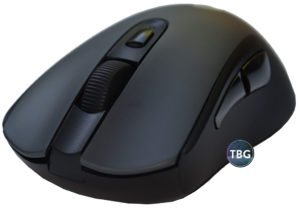 We’ve made no secret of the fact that we thought the Logitech G403 was the best mouse ever released when it hit the market in September 2016. It’s the one we’ve chosen as our daily driver ever since then, even though we’ve had a whole lot of other high-performance mice available to us. The G403 had just two weaknesses: its RGB effects were lame, and it lasted only around 25-30 hours in real-world use.
We’ve made no secret of the fact that we thought the Logitech G403 was the best mouse ever released when it hit the market in September 2016. It’s the one we’ve chosen as our daily driver ever since then, even though we’ve had a whole lot of other high-performance mice available to us. The G403 had just two weaknesses: its RGB effects were lame, and it lasted only around 25-30 hours in real-world use.
Well, the G603 changes the equation entirely. Yes, we might have been a bit rough on it in this review, but that’s because it promised the world. And in reality, the G603 is everything that the average PC user who also happens to like gaming could want in a mouse. It’s not perfect, but it’s pretty darn close, and it makes us wonder whether consumers will still be snapping up all the RGB-lit wired gaming mice being peddled by Logitech’s competitors at the same pricepoint once they realize they’ve been blinded by the light and chained to their desks. Indeed, Logitech has thankfully given up on trying to run a cruise ship-worth of lights off of batteries, while massively improving the sensor to extend battery life by a minimum of 10x to make a wireless gaming mouse for the masses.
We named the G403 “The One” last year, the wireless mouse that gamers had been waiting for since the dawn of the PC gaming era. Well, the G603 is “The Only.” It’s the only mouse we think anyone in the midrange market should even consider, whether their primary use is gaming, work, or just surfing around. The G603 is ultra-light, ultra-responsive, and ultra-comfortable, and being wireless, it’s positively tangle-free. The fact that it sports ultra-long battery life just means you can focus on all of its other great traits without worrying about when the fun times will end. If only Logitech hasn’t dropped the G403’s excellent rubber grips – perhaps we’ll see them make a return in a future revision of the G603.
The Logitech G603 Lightspeed Wireless Gaming Mouse will be available from Amazon for $69.99 shipped upon its release in late-September 2017. Once it ships, the G603 will be an obvious pick for our Peripherals Buyer’s Guide, which we update on a quarterly basis.


